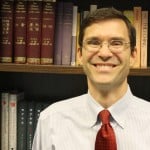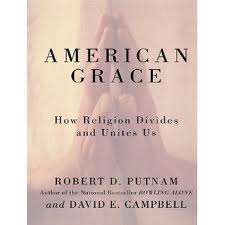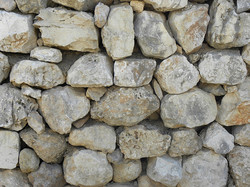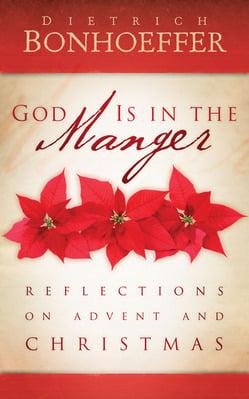 By Grant Hardy
By Grant Hardy
Here’s your chance to be a sociologist. The next time you meet an LDS male over the age of 18, ask him this: “Do you think Mormon women should hold the priesthood and share equally in the administrative leadership of wards and stakes”? According to American Grace: How Religion Divides and Unites Us, the answer may surprise you. And if you’re a Mormon woman, you’re likely in for a “what the heck?” moment.
Authors Robert Putnam and David Campbell asked a wide variety of Americans their opinion about women leading churches. They report that “by 2006 majorities of every religious tradition except Mormons had come to favor women clergy,” including 93% of both Mainline Protestants and Jews, and 75% percent of “Anglo” Catholics (p. 243). Even 66% of Evangelicals agreed, as compared with 30% of Latter-day Saints. In fact, only 10% of Mormon women favor female clergy in their church, which in an LDS context means giving women the priesthood. As Putnam and Campbell note, “Mormons, and especially Mormon women, appear to be the only holdouts against the growing and substantial consensus across the religious spectrum in favor of women playing a fuller role in church leadership.”
Yet the most remarkable finding is that within Mormonism itself, there is a significant split by gender on this question. The number that looks the most extraordinary to outsiders–that only 10% of Mormon women want the priesthood–seems pretty predictable to those inside the faith. But the finding that 48% of Mormon men say they favor female LDS clergy is truly startling.

Nearly half of Mormon men would be okay with women holding the priesthood? Really? Who knew? And how did the LDS Newsroom miss this in their not one but two blogposts highlighting findings from American Grace? Could it be that a substantial number of LDS men, who for years have told women to be content without the priesthood, don’t really believe it themselves? This is the largest gender difference in the entire book, and it concerns one of the most fundamental principles of the Mormon faith.
Why would Mormon women, who are increasingly educated, working, and professional, so overwhelmingly want to be excluded from positions of ecclesiastical authority in their own congregations? And why are LDS men apparently less committed to the current ecclesiastical order?
Part of the explanation lies in the nature of Mormon clergy. Priesthood leadership positions, which rotate regularly, are filled by assignment; they are part-time, unpaid, sometimes time-consuming tasks added on top of work and family responsibilities. Women have some assignments–generally with regard to other women or children–but they are always supervised by male priesthood leaders. Mormons thus have a non-professional, lay clergy which is restricted to men, and all males over the age of twelve are given some priesthood authority. Yet Mormon women tell pollsters they like it this way. Any feminist sensibilities they may have are generally not evidenced in aspirations to the priesthood; indeed, fears of radical Mormon feminists rocking the foundations of the church appear to have been greatly exaggerated, although excellent blogs like Feminist Mormon Housewives continue to raise important questions.
I hesitate to speak for Mormon women, but with some coaching from my wife, I came up with a few possible explanations:
- Most women see an exclusively male priesthood as part of the inheritance of the Restoration, when the priesthood was restored to Joseph Smith by heavenly beings, and in accordance with biblical tradition (despite some interpretations of Rom.16:1,7). This is the way that God has arranged things, so why question it?
- Many believe that motherhood is the equivalent of the priesthood, and they represent two complementary spheres of activity that reflect innate, or even eternal gender differences. (This is disputed for a variety of reasons, see here and here, but it is nevertheless commonplace in the church.)
- Others may view the priesthood as a way to keep men deeply involved in faith and community, as a sort of spiritual affirmative action program. Or they may look at the time men spend in church meetings and decide to take a pass.
- Many Mormon women like the sort of men/husbands/fathers that priesthood service creates (at least in the ideal). LDS men who are heavily involved in ecclesiastical leadership tend to be very committed to their families as well, and they take marital vows seriously.
- The nurturing, pastoral care, submission, and self-sacrifice entailed in priesthood service in some ways domesticate and feminize men (another aspect of priesthood/motherhood equivalence?), and women are often willing to share their husbands’ time and attention with single mothers and widows in the congregation (like polygamy without the sex?) because it is part of what it means to consecrate family resources to the community.
- It may be that women who have faithfully put aside questions of equality, and those who have shouldered increased burdens at home while their husbands were away on priesthood service, may feel their sacrifices are diminished if it turns out that the all-male priesthood was optional or temporary. (It’s not like Mormon women don’t realize their opinions on church authority are countercultural.)
None of this will be too surprising to insiders, but what of the substantial number of LDS men who say, “Sure, it would be fine with me if God gave women the priesthood”?
- Some might simply be happy to share the burdens of church administration. In Mormonism, the priesthood means service and sacrifice as much as authority–no one is getting paid.
- Others may be keenly aware of the under-utilized administrative talents of the women in their congregations; because Mormon wards are run by volunteers, they are perpetually under-staffed, especially when the majority of significant assignments are off- limits to women.
- A few might be somewhat put off by the fact that church is virtually the only aspect of their lives that is segregated by gender (with the exception of those who are employed in the Church Office Building, most LDS male professionals work as equals with, and often for, women). All-male disciplinary councils can be particularly uncomfortable.
- Many men probably find it easy to adopt a politically-correct opinion on something that is quite unlikely to change, without really thinking through the broader implications or the logistics of what would truly be a “priesthood of all believers.”
- In my case, it’s sort of embarrassing to admit that my MBA wife is disqualified from ever serving as a church financial clerk simply because she is female (though when I answered the question at the beginning of this post, my wife’s response was, “If you’re so open minded, why don’t you tell the stake president you think women should have the priesthood and urge him to pass your concerns up the priesthood line to the area authority seventy?”)
The truth is, in Mormonism today there is virtually no one–female or male–agitating for women to be given the priesthood. Nevertheless, in the recent worldwide training that accompanied the launch of the new Church Handbook [http://www.sltrib.com/sltrib/lifestyle/50690125-80/church-handbook-says-members.html.csp] there was explicit encouragement to include more women’s voices in the week-to-week running of local congregations by emphasizing the ward council (which includes women) over the priesthood executive committee (which does not). It’s a small step, but perhaps it will make a difference in wards led by the nearly 50% of Mormon men who claim feminist sympathies.
So ask the LDS men and women that you know, “Do you think Mormon women should hold the priesthood and share equally in the administrative leadership of wards and stakes?” See if you find a 50/10% gender split, and then be sure to follow up with a “why?” or “why not?” It could lead to more interesting conversations than you might expect.
Grant Hardy is a member of the stake presidency in the Asheville, North Carolina stake and a history professor at UNC-Asheville. He is the author of Understanding the Book of Mormon: A Reader’s Guide and several other books.


